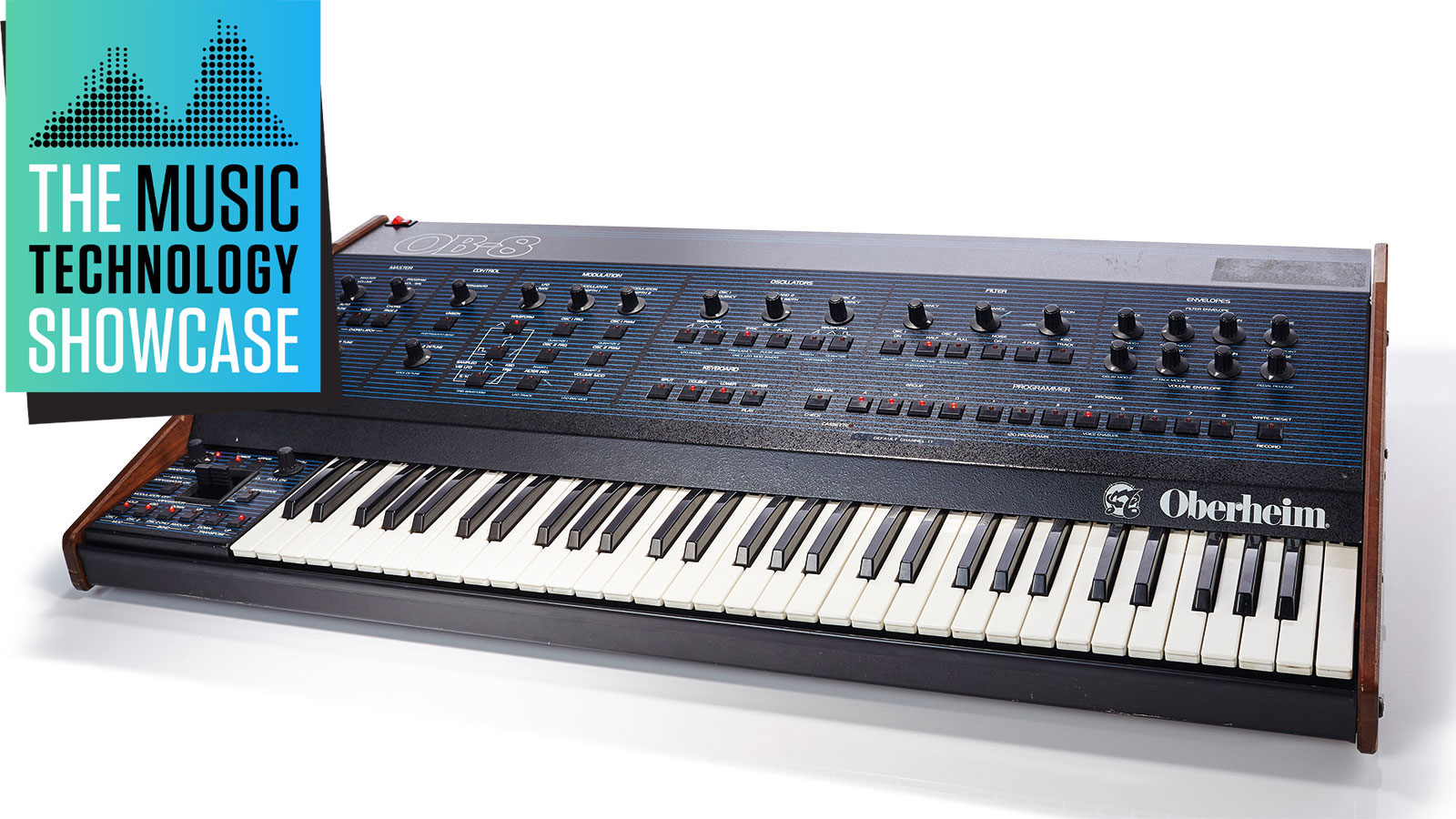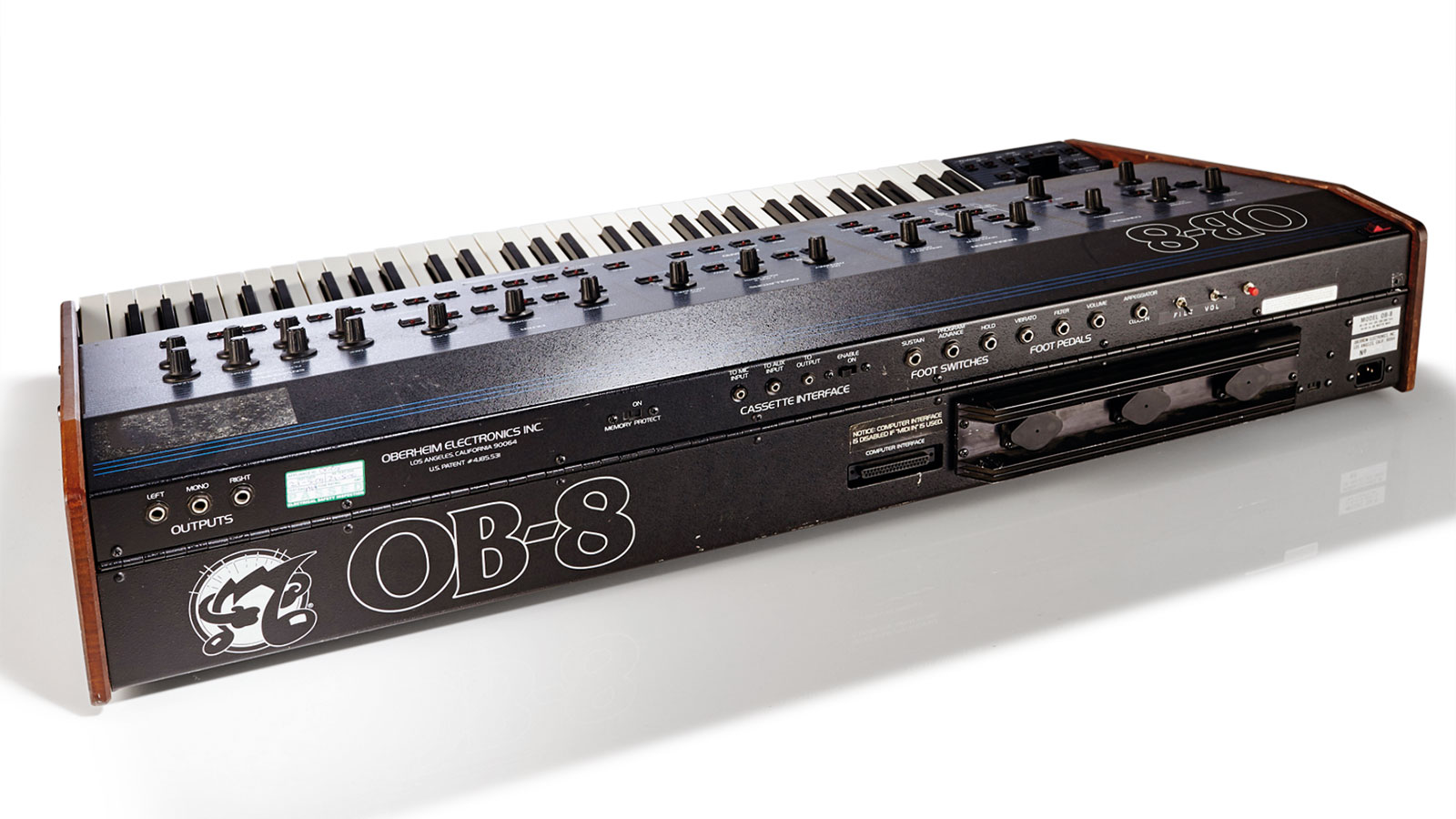Vintage music tech icons: Oberheim OB-8
The OB-8 was the last in a line of classic American polysynths.

Music Tech Showcase 2021: The Oberheim OB range became a staple of the American music scene of the ’80s. These polyphonic analogue synths could also be found on European productions, despite being overshadowed by Roland and others – meaning they are harder to come by in the UK, and are (slightly) more affordable than their less well-equipped brethren.
Although there are design and sonic differences between the various OBs, they do have a recognisable ‘family sound’.
Oberheim Electronics founder Tom Oberheim’s first foray into music technology was as a constructor of ring modulators. These were mainly intended for friends, but in 1970 one of his devices was used in the film Beneath The Planet Of The Apes. He went on to design the extremely popular Maestro Phase Shifter.
After becoming a dealer for ARP, and having had some success with the (144 note) DS-2 sequencer, he was inspired to build his own synth, the monophonic Synthesizer Expander Module (SEM).
As the name suggests, this was intended as an extension module for existing synths. It wasn’t long before two or four of these modules were combined with a keyboard (and associated microprocessor-controlled scanning circuit) to create a polyphonic synthesizer system.
The OB-8 is a dual VCO synth, with each voice employing a CEM3340 IC to deliver two VCOs capable of generating pulse/square, sawtooth and triangle waveforms
Later, an eight-voice version was introduced. These were the first affordable polyphonic synthesizers, though parameter recall was basic, and only partial – accomplished with the use of their ‘Programmer’ module.
The next step was to build something more fully integrated. The result was the OB-X, which used similar circuitry to the SEM’s (installed as a series of voice cards) but with full patch save and recall.
Get the MusicRadar Newsletter
Want all the hottest music and gear news, reviews, deals, features and more, direct to your inbox? Sign up here.
The synth circuitry was custom-built from discrete components (apart from the envelopes), with all the subtle inaccuracies beloved of analogue anoraks. Because of this though, reliability could be a problem.
The next iteration, the OBXa, instead embraced Curtis (CEM) chips fully, which reduced the component count considerably. This led in 1983 to the OB-8, which used fewer components still and added more features.
Less is more
The OB-8 is a dual VCO synth, with each voice employing a CEM3340 IC to deliver two VCOs capable of generating pulse/square, sawtooth and triangle waveforms. Pulse Width is adjustable only for both oscillators simultaneously.
Each could be transposed in semitone steps, with independent detune available for Oscillator 2. This second oscillator could also have its pitch controlled by the filter envelope (which replaced the Cross Modulation option of earlier OBs).
Sadly, a full mixer section is missing, so each oscillator (and the additional white noise source) can only be ‘On’ or ‘Off’, though Oscillator 2 has the luxury of a ‘Half’ setting. This is perhaps the biggest omission on the OB range, and makes subtle use of Noise a no-no. Oscillator sync is possible, and sounds great.
Although the original Oberheim SEM was famous for a having a multi-mode filter, all the OB synths stuck with using only the low-pass variety. The OBXa and OB-8 did at least give you the choice of 12dB/octave and 24dB/octave filter slopes.
The vibrato LFO is independent of the main LFO, and is perfect for dialling up subtle pitch wobble on pads or full-on trills during funky synth sweeps
On my OB-8 the, theoretically tamer, two-pole filter is capable of a far heftier resonant peak, but is also great for more subtle shaping. The filter has its own four-stage envelope, though the filter’s keyboard tracking was either on (100%) or off. Another ADSR takes care of level/amp duties.
The modulation possibilities go a lot further than many other synths of the era, with a wide range of LFO wave shapes that can be routed to the frequency and pulse width of each oscillator independently, plus filter frequency and volume (for tremolo).
The performance section has two lever/paddle-style controllers also for pitch-bending and vibrato depth duties. The vibrato LFO is independent of the main LFO, and is perfect for dialling up subtle pitch wobble on pads or full-on trills during funky synth sweeps.

Turn the page
The real bonus comes with the so-called ‘Page 2’ features. With a couple of button presses, you can access a second layer of programming that adds many detailed functions to the LFO in particular (including onset envelopes and numerous quantising, phase and polarity possibilities).
There are also all manner of portamento options, and the all-important Voice Detune for creating enormously thick single-note sounds in Unison mode. The OB-8 has both mono and stereo outputs (with a separate pan control for each voice) so the results in Unison mode can be both fat and wide.
As a studio-bound tool it is wonderful – even if only to dream of being Prince for a few minutes
Let’s not forget the arpeggiator that can be externally clocked (only by old-school sync pulse, not MIDI). Unusually, for its time, the OB-8 also had split and doubling/layering capabilities with its own dedicated memory settings. All this made for a powerful and sophisticated synth which was both easy to use (for conventional subtractive tweaking), and deep (when exploring Page 2).
Although the OB-8 maintained the OB family sound, it is considered the least ‘fat’ of a pretty hefty bunch – this is partly down to its improved calibration and tuning procedures. Its programming capabilities go much further than the others (and most similar synths of the day), however, and it is potentially more reliable and much cheaper to maintain.
Despite the reduced circuit size, the OB-8 has a massive footprint and a weighty metal and wood chassis. This rules it out for casual gigging, but as a studio-bound tool it is wonderful – even if only to dream of being Prince for a few minutes.
Verdict
It’s one of the cheaper ways to capture the sound of a particular slice of synthesizer history.
Original RRP £2,995 | Used from £2,500
Buying a used Oberheim OB-8
Buying a vintage synth can be tricky and the OB-8 is no exception
1. The OB-8 was continuously improved during its two-year lifetime. Early units did not have MIDI, but there are still MIDI kits available should you find one lacking in this department. Some earlier units also have a different type of keyboard assembly that is prone to stiffening with time (stripping-down and re-bushing is the only solution here).
2. Some later units have the Page 2 functions printed on the front panel (a real help). These will also likely have undergone all the various Oberheim circuit updates and mods, so may be less temperamental. Check the EPROM version too.
3. Calibrating an OB-8 is relatively easy with just a voltmeter, but this assumes all the components are still working to spec.


Future Music is the number one magazine for today's producers. Packed with technique and technology we'll help you make great new music. All-access artist interviews, in-depth gear reviews, essential production tutorials and much more. Every marvellous monthly edition features reliable reviews of the latest and greatest hardware and software technology and techniques, unparalleled advice, in-depth interviews, sensational free samples and so much more to improve the experience and outcome of your music-making.
“Excels at unique modulated timbres, atonal drones and microtonal sequences that reinvent themselves each time you dare to touch the synth”: Soma Laboratories Lyra-4 review
e-instruments’ Slower is the laidback software instrument that could put your music on the fast track to success










